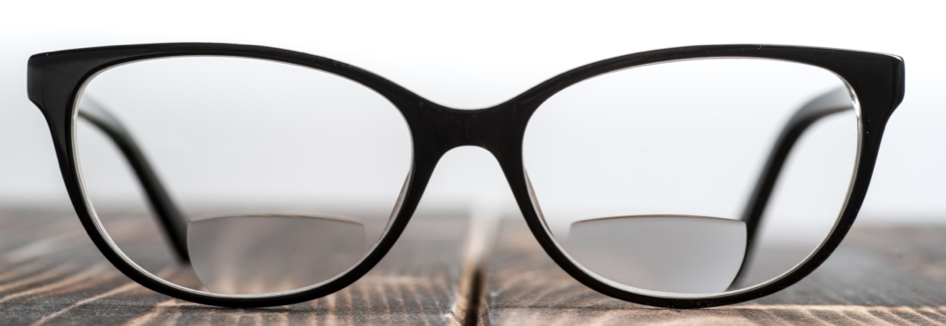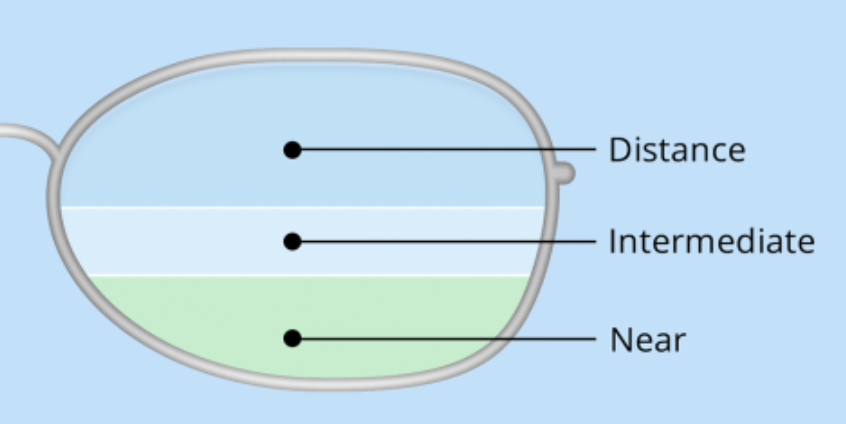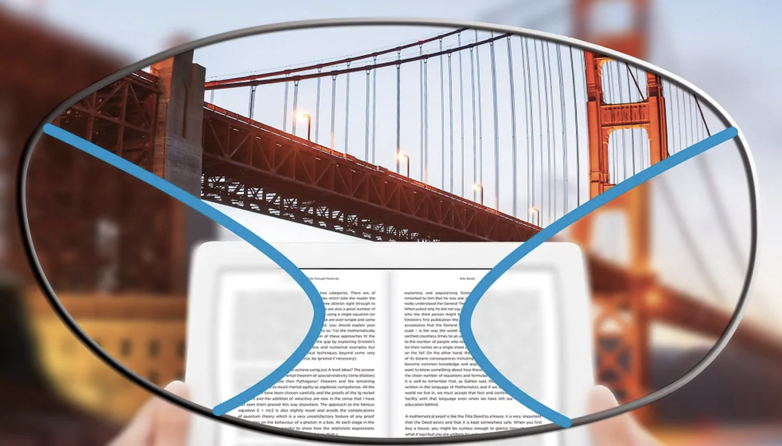Presbyopia is a common type of vision disorder that causes a gradual loccof ability to focus on near objects. It’s a natural aging proceccof the eyes. Presbyopia usually becomes noticeable in the early to mid-40s and continues to worsen until around age 65. Individuals begin to have trouble focusing up close and may hold books or newspapers at arm’s length to be able to read them including text messages on their phone.
Symptoms
Presbyopia develops gradually. These signs and symptoms may first be noticed after the age of 40:
- Trouble seeing things-up close/ blurred vision at normal reading distance
- Holding the reading material farther away to make the letters clearer
- Difficulty reading in leccbright conditions
- Eyestrain or headaches after reading or doing close-up work
What causes presbyopia?
When an individual is younger, the lens of the eye is soft and flexible, allowing the tiny muscles inside the eye to easily reshape the lens to focus on close and distant objects. Presbyopia occurs when the age-related changes within the proteins in the lens causes gradual thickening and loccof flexibility of the natural lens inside the eye. As well, age-related changes also take place in the muscle fibers surrounding the lens. With leccelasticity, it becomes difficult for the eyes to focus on close objects.
Treatment for presbyopia
In early stages of presbyopia, some simple habit changes can be made to help on reading, like:
- Holding the reading materials farther away
- Choosing large-print books or increasing font size on the electronic devices
- Using brighter reading lights
As your presbyopia worsens, glasses or contact lenses are needed to help with reading. Some people use over-the-counter reading glasses, or an eye care professional can prescribe spectacles to help you see as clearly as possible.
Reading glasses
Eyeglasses are a simple, safe way to correct vision problems caused by presbyopia. Reading glasses helps to correct close-up vision problems by bending light before it enters the eye. They can be bought without a prescription, but the accurate power of reading glasses that are needed should be determined from an eye examination. Most non-prescription reading glasses range in power from +1.00 diopter (D) to +3.00 D.
If prescription corrective lenses are required for other vision problems such as short-sightedness, long-sightedneccor astigmatism, then bifocals, trifocals, or progressive lenses might be needed to obtain a clear vision for distance and near.
- Bifocals can correct close-up and far vision. These lenses have a visible horizontal line that separates the prescription. The top portion refracts light to allow you to see distant objects and the bottom of the lens refracts light for close up vision.

- Trifocals have three portions to correct for close-up, middle distance and distance vision. Trifocals come with two visible horizontal lines in the lenses.

- Progressive multifocal lenses correct vision like bifocals and trifocals, but instead of a line that divides each refractive area, different areas of the lens have different focusing strengths. The upper portions usually corrects distance vision, middle portion corrects intermediate vision (computer distance), while lower portions corrects near vision.

Contact Lenses
There are two types of contact lenses that help presbyopia:
- Monovision contact lenses. Monovision can be achieved by wearing a contact lens for distance vision in one eye (usually the dominant eye) and a contact lens for close-up vision in the other eye. Monovision requires some adaptation time and train the brain to receive images from different eyes to fuse into a single clear image.
- Multifocal contact lenses. These lenses have several rings or zones set at different powers. With this design, both near and far vision are obtained at the same time. However, the brain learns to automatically select the right focus for what we want to see. This could make the vision with a multifocal lens leccsharp than using a monofocal lens.
Surgery
Refractive surgery. Some people decide to have surgery to achieve monovision. For presbyopia, this treatment can be used to improve close-up vision in the non-dominant eye. Using a laser, the cornea is reshaped for clear far vision in one eye and close-up vision in the other. This is like wearing monovision contact lenses but refractive surgery is an irreversible procedure. Refractive surgical procedures include: Conductive keratoplasty, Laser-assisted in situ keratomileusis (LASIK), Laser-assisted subepithelial keratectomy (LASEK) and Trans-epithelial Photorefractive Keratectomy (TransPRK). Implantable Collamer Lens (ICL) is a refractive procedure which is reversible.
Corneal inlays. Tiny devices known as corneal inlays, can help correct presbyopia. It involves inserting a small plastic ring with a central opening, into the cornea of one eye. The opening acts like a pinhole camera and allows in focused light so that you can see close objects. Corneal inlay is a reversible procedure, eye surgeons can remove the rings if the result is not satisfied.
